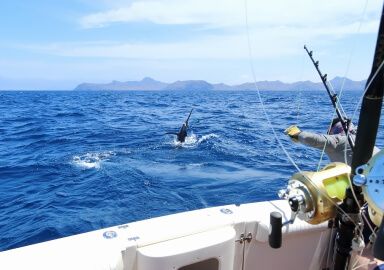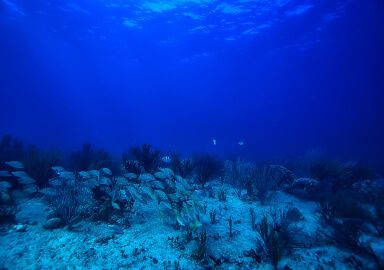Blue Marlin
Blue marlin are a very large, fast moving top sport angling billfish found throughout the tropical ocean areas of the world.
View 147 listings
147
listings
–
price starting from
25
countries
–
to the nearest trip
Where and When?
The Indo Pacific species is found in all the tropical oceanic areas of the world except for the Atlantic Ocean where the Atlantic blue marlin supports an important sport fishery. Many prime blue marlin fishing destinations are located along the warmer areas of the eastern seaboard of the USA, particularly in Florida and the Gulf Coast, but Atlantic blue marlin are also caught off north eastern South America and Portugal. Cuba used to be a particularly important and popular blue marlin fishing destination and has been reclaiming some of its prior significance recently. In the tropical areas the species may be found year round but in the summer months they are also caught from the western shores of Europe and the eastern seaboard of USA north of Florida. The Indo Pacific blue marlin is targeted in many parts of its range either as a commercial or sport fish. Blue marlin feed only during daylight hours in most localities.
About Blue Marlin
Blue marlin are one of the best known and most sought-after billfish. Most fish scientists agree that there are actually two species of blue marlin, the Atlantic blue marlin Makaira nigricans, and the Indo Pacific Makaira mazara. They are, however, difficult to separate either in terms of appearance or behaviour. The blue marlin are usually associated with "blue water", and rarely approach coastlines. They are a warm water species that often migrate to cooler ocean areas in summer and return to more tropical areas in winter. The official blue marlin angling record is listed as 636 kilograms but there is a report of one of 818 kilograms being caught. They can attain 5 meters in length with an estimated lifespan of up to 20 years. The females may be up to four times larger than males and blue marlin usually reach maturity at between 50 and 78 centimetres. They are mostly piscivorous, eating mainly fish which they often stun or injure with their “bill” as they pass through shoals of target fish and then they return to consume the damaged fish. The blue marlin is described as “threatened” as it is under extremely heavy fishing pressure over much of its range and there are important commercial fisheries in several parts of the world.












